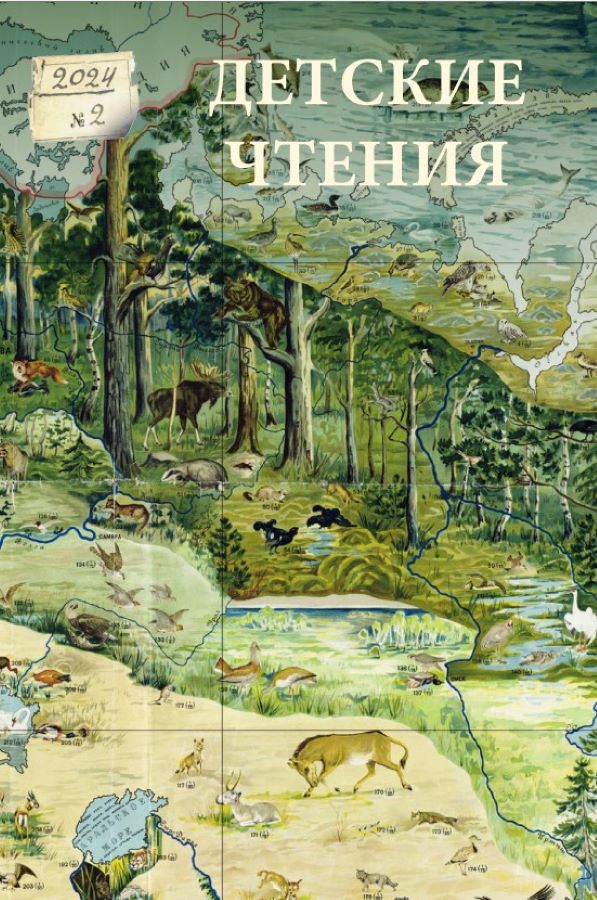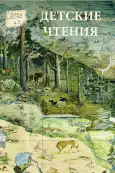Retranslating children’s literature: an account of a conference held at the University of Trento
- Authors: Bibbò A.1, Lorandini F.2
-
Affiliations:
- University of Trento
- University of Modena and Reggio Emilia
- Issue: Vol 26, No 2 (2024)
- Pages: 345-350
- Section: CONFERENCES
- URL: https://journal-vniispk.ru/2304-5817/article/view/280826
- DOI: https://doi.org/10.31860/2304-5817-2024-2-26-345-350
- ID: 280826
Cite item
Full Text
Abstract
The third edition of the «Giornate di studio sulla ritraduzione» Ritradurre la letteratura per ragazzi (University of Trento) had a special focus on the retranslation of children’s literature. The aim of these meetings is to bring together specialists of different languages and cultures and provide them with a space for discussion taking the idea of retranslation as a vantage point, as well as to propose a practical and theoretical reflection on the concept of retranslation. Children’s literature is a particularly interesting field of investigation for a variety of interrelated reasons including it’s tendency to favour target-oriented translation approaches and its key role in processes of nation-building. The Trento conference saw the participation of twenty speakers, from a number of Italian and European universities, whose contributions dealt with different historical periods and cultural spheres. These contributions investigated phenomena concerning the history of language and especially emphasised the profound connections between children’s literature, politics and deep changes in ideology and society.
Full Text
For the third time in three years, scholars and translators gathered at the University of Trento to discuss all things retranslation for what has become a traditional annual event. While the first two conferences explored the retranslation of modern classics (2021) and the retranslation of 19th century literature (2022), the third edition of the «Giornate di studio sulla ritraduzione», held from the 5th to the 7th of December 2023, had a special focus on children’s literature. The aim of these meetings is to bring together specialists of different languages and cultures with an interest in translation, and provide them with a shared space for discussion, as well as to propose a practical and theoretical reflection on the concept of retranslation.
At the beginning of the 2000s, Isabelle Collombat defined the 21st century as “l’âge de la retraduction” because of the exponential growth in the number of literary works being retranslated and because theoretical interest in retranslation was beginning to emerge [Collombat 2004]. More than twenty years later, retranslation has become a thriving object of study, which had a starting point in the so-called retranslation hypothesis, attributed to Antoine Berman, but formulated by Andrew Chesterman [Chesterman 2000]. In a special issue of the journal Palimpsestes in 1990, Paul Bensimon defined the first translation of a text as a simple «introduction» [Bensimon 1990], and Antoine Berman emphasised that retranslations have the merit of «completing» the work of translation, «domaine d’essentiel inaccomplissement» [Berman 1990], moving from a target-oriented translated text to a source-oriented one. As is known, subsequent theoretical reflections addressed several issues connected with the supposedly linear evolution from the early ‘hot’ translations to the later ‘cold’ ones, to employ Claude Demanuelli’s terminology, taken up by Isabelle Vanderschelden [Vanderschelden 2000]. In recent years, scholars have gradually abandoned such teleological approaches, rather emphasising the historical and linguistic evolution of translation conventions [Van Poucke 2017], as well as the multiplicity of cultural, historical and social factors underlying the retranslations of a literary work [Brownlie 2006], whose refractions have been compared to those of a prism [Reynolds 2019]: a focus on retranslation fosters an interdisciplinary dialogue involving disciplines as diverse as history of publishing, literary criticism, history of language, sociology of literature, history of ideas, and translation studies1.
Children’s literature is a particularly interesting field of investigation for a variety of interrelated reasons [Douglas, Cabaret 2014]. Historically, the translation of children’s and young adult books has shown a tendency to adopt a target-oriented and functionalist approach. These approaches reveal an understanding of childhood and adolescence as a preparation for adulthood rather than meaningful ages in their own right, and translations are for the most part significantly adapted to the target cultural context [Lathey 2016; Pederzoli 2012; O’Sullivan 2005]. Children’s literature also has a very special place within the history of literature and publishing: although it still occupies a partially marginal position in literary studies, it seems to be central in the formation of the national and transnational literary canons, and indelibly marks the imagination of each generation.
The Trento conference saw the participation of twenty speakers: translators, editors and scholars from several Italian and European universities, whose contributions dealt with different historical periods and cultural spheres. Their stimulating papers investigated phenomena concerning the profound connections between children’s literature, political history and deep changes in ideology and society. Attendees were presented with thought-provoking talks concerning retranslation over the centuries, ranging from the retranslations and adaptations of the Roman de Renart to those of Tom Sawyer, Mary Poppins and Tintin. Unsurprisingly, the presence of papers on Aesop’s and Phaedrus’ fables, on Perrault’s and Basile’s work, as well as on the fairy tales of the Grimm brothers and Andersen, was quite significant. Modern children’s and young adult classics such as Anne of Green Gables by L. M. Montgomery, Hector Malot’s Sans famille, Ferenc Molnár’s A Pál utcai fiúk (The Paul Street Boys) also featured prominently, and so did the most recent translations of a classic of Russian literature such as Kornej Čukovskij’s Krokodil. While the majority of talks focused on the translation of narrative into Italian, contributions also offered forays into neighbouring areas, including multimodal approaches on the interplay between retranslations and illustrations of Lewis Carroll’s Alice books, as well as the dissemination of Italian children’s literature abroad, with papers on the French and Spanish translations of Gianni Rodari’s La freccia azzurra, as well as on the adaptations of Carlo Gozzi’s works in USSR. Retranslations were approached from multiple points of view, through synchronic and diachronic analyses, from ecocritical and gender perspectives, including frequent references to the role played by activist and feminist publishing.
Peeters and Van Poucke have recently argued in a special issue of the journal Parallèles (Peeters, Van Poucke 2023), that focusing on the why?, how?, what?, where?, when? and who? questions, it is still possible to address key aspects related to the phenomena of retranslation. This has the potential to bring to light elements hitherto forgotten or misunderstood in literary studies while suggesting new lines of research for future scholars, including the absence of retranslations, that is the reasons that texts are not retranslated. The choices behind the retranslation of children’s books show the centrality of both emotional issues (the connection with the translations we read as children) and aspects related to the economic and publishing systems: reflecting on these choices it is possible to study the role, the actions, and the habits of the agents of the literary field (authors, editors, publishers, literary agents, translators, readers) involved in the phenomenon of mediation. Children’s and young adult texts are a moving target and can be retranslated for very different reasons: economic motivations, changes in translation norms and because of the supposedly aged language of earlier translations, the loosening of censorship restrictions and shifts in the perception of childhood. The very status of a text may change over time thanks to philological work, or because a literary work originally aimed at an adult audience may be rewritten for children, for didactic or political reasons. The unique blend of scholars and practitioners involved in the «Giornate sulla ritraduzione» encouraged a stimulating debate over these issues and the conference provided the speakers and audience alike with a space for an energising and frank exchange of ideas.
The recordings of the Trento conference can be found here: https://www.youtube.com/playlist?list=PL9vK57kcmwQN5vQBqnmkCztZdiN-TOc3vhttps://www.youtube.com/playlist?list=PL9vK57kcmwQN5vQBqnmk CztZdiN-TOc3v and the proceedings will be published in a special issue of RiTra — rivista di traduzione: https://ojs.unito.it/index.php/ritra
Notes
1 Several contributions have been published over the past fifteen years, implementing different approaches and proposing overall reflections on the theory and practice of literary retranslation, including: [Monti, Schnyder 2012; Courtois, 2014; Deane-Cox, 2014; Alvstad, Assis Rosa 2015; Berk Albachten, Tahir Gürçağlar, 2019; Berk Albachten, Tahir Gürçağlar, 2020; Cadera, Walsh, 2017; Ricciardi 2019; Agostini-Ouafi, Colin 2021; Koffeman, Smeets, 2021; Cadera, Walsh, 2022; Peeters, Van Poucke 2023].
About the authors
Antonio Bibbò
University of Trento
Author for correspondence.
Email: antonio.bibbo@unitn.it
ORCID iD: 0000-0002-7779-5898
Italy
Francesca Lorandini
University of Modena and Reggio Emilia
Email: francesca.lorandini@unimore.it
ORCID iD: 0000-0002-4765-0698
Italy
References
- Agostini-Ouafi, Colin 2021 — Agostini-Ouafi, V., Colin M. (2021). Traduire — et retraduire — les classiques, Transalpina, 24. doi: 10.4000/transalpina.863.
- Alvstad, Assis Rosa 2015 — Alvstad, C., Assis Rosa, A. (2015). Voice in Re- translation: An overview and some trends. Target, 27(1), 3–24.
- Bensimon 1990 — Bensimon, P. (1990). Présentation, Palimpsestes, 4, IX–XIII.
- Berk Albachten, Tahir Gürçağlar, 2019 — Berk Albachten, Ö., Tahir Gürçağlar, Ş. (2019). Perspectives on retranslation. Ideology, paratexts, methods. New York: Routledge.
- Berk Albachten, Tahir Gürçağlar, 2020 — Berk Albachten, Ö., Tahir Gürçağlar, Ş. (2020). Retranslation, multidisciplinarity and multimodality. The Translator, 26(1).
- Berman 1990 — Berman, A. (1990). La retraduction comme espace de la tra- duction. Palimpsestes, 4, 1–7.
- Brownlie 2006 — Brownlie, S. (2006). Narrative Theory and Retranslation The- ory. Across Languages and Cultures, 7(2), 145–70.
- Cadera, Walsh, 2017 — Cadera, S. & Walsh, A. (2017). Literary retranslation in context. Bern/Oxford: Peter Lang.
- Cadera, Walsh, 2022 — Cadera, S., Walsh, A. (2022). Retranslation and recep- tion: Studies in a European context. Leiden/Boston: Brill.
- Chesterman 2000 — Chesterman, A. (2000). A Causal Model for Translation Studies. In M. Olohan (Ed.), Intercultural Faultlines (pp. 15–28), Manchester: St Jerome.
- Collombat 2004 — Collombat, I. (2004). Le XXIe siècle: l’âge de la retraduction. Translation Studies in the new Millennium, 2, 1–15.
- Courtois, 2014 — Courtois, J.-P. (2014). De la retraduction: le cas des romans. Bruxelles: La Lettre volée.
- Deane-Cox, 2014 — Deane-Cox, S. (2014). Retranslation. Translation, literature and reinterpretation. London: Bloomsbury.
- Douglas, Cabaret 2014 — Douglas, V., Cabaret, F. (2014). La retraduction en littérature de jeunesse Retranslating children’s literature. Bruxelles: Peter Lang.
- Koffeman, Smeets, 2021 — Koffeman, M., Smeets, M. (2021). (Re-)traduire les classiques français. Relief — Revue électronique de littérature française, 15(1).
- Lathey 2016 — Lathey, G. (2016). Translating children’s literature. London/New York: Routledge.
- Monti, Schnyder 2012 — Monti, E., Schnyder, P. (2012). Autour de la retraduc- tion: Perspectives littéraires européennes. Paris: Orizons.
- O’Sullivan 2005 — O’Sullivan, E. (2005). Comparative children’s literature (trad. A. Bell). London & New York: Routledge.
- Pederzoli 2012 — Pederzoli, R. (2012). La traduction de la littérature d’enfance et de jeunesse et le dilemme du destinataire. Bruxelles: Peter Lang.
- Peeters, Van Poucke 2023 — Peeters, K., Van Poucke, P. (2023). Retrans- lation, thirty-odd years after Berman. Parallèles, 35(1), 3–27, doi: 10.17462/para.2023.01.01.
- Reynolds 2019 — Reynolds, M. (2019). Introduction. In M. Reynolds (Ed.), Pris- matic Translation (pp. 1–18). Cambridge: Legenda.
- Ricciardi 2019 — Ricciardi, S. (2019), Tradurre e ritradurre i classici, Testo a fronte, 60.
- Van Poucke 2017 — Van Poucke, P. (2017). Aging as a Motive for Literary Retranslation: A Survey of Case Studies on Retranslation, Translation and Interpreting Studies, 12(1), 91–115.
- Vanderschelden 2000 — Vanderschelden, I. (2000). Why Retranslate the French Classics? The Impact of Retranslation on Quality. In M. Salama-Carr (Ed.), On Translating French Literature and Film II (pp. 1–18). Amsterdam/Atlanta: Rodopi.
Supplementary files










